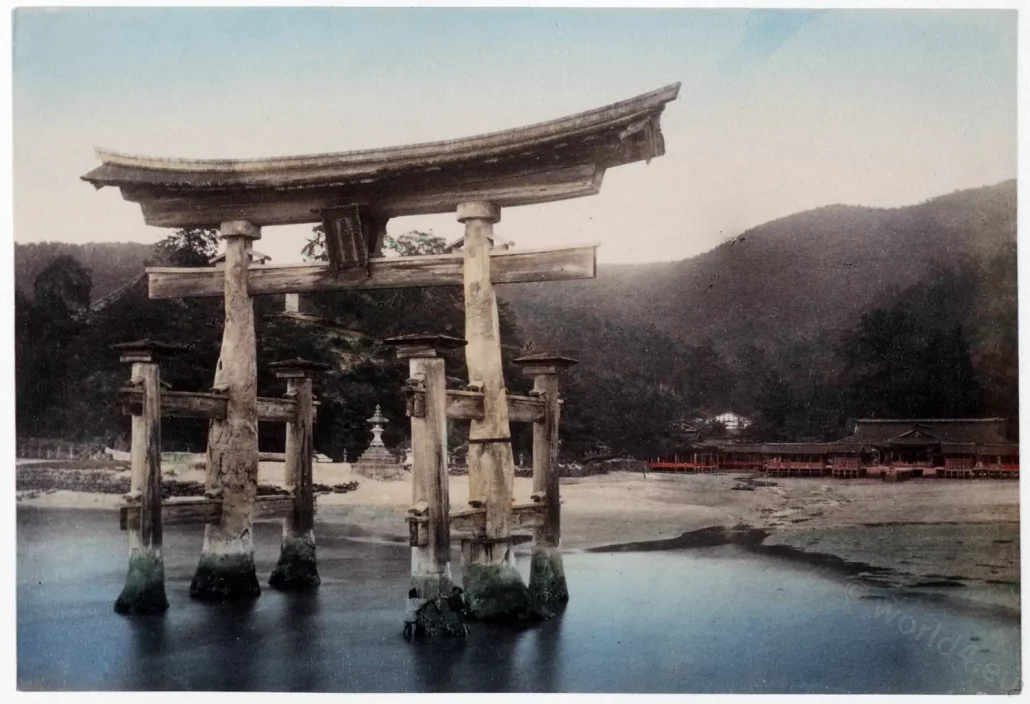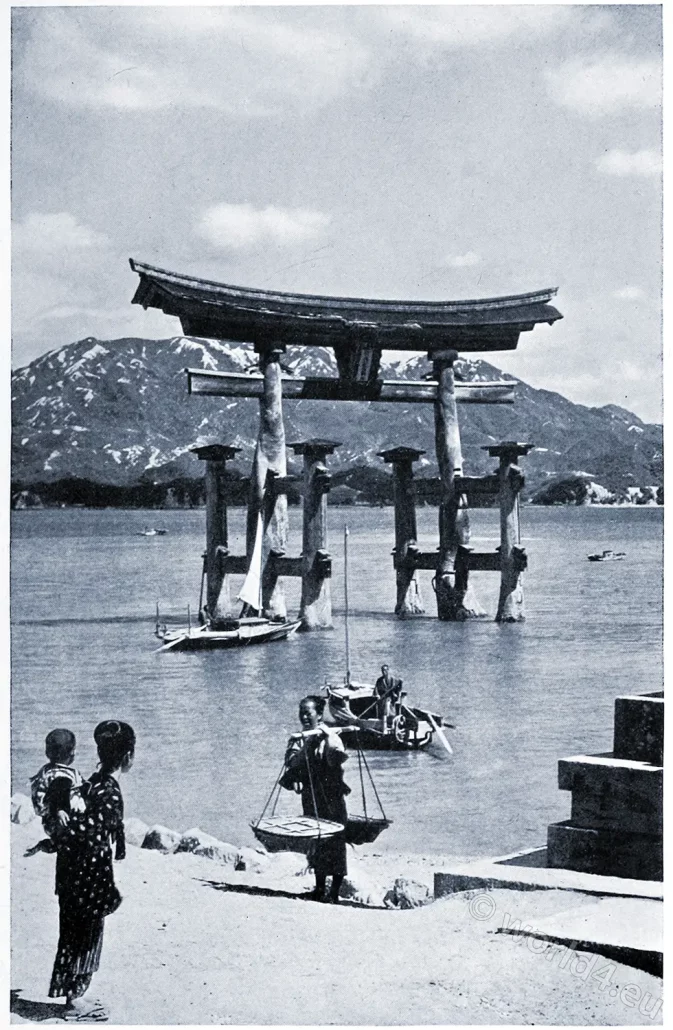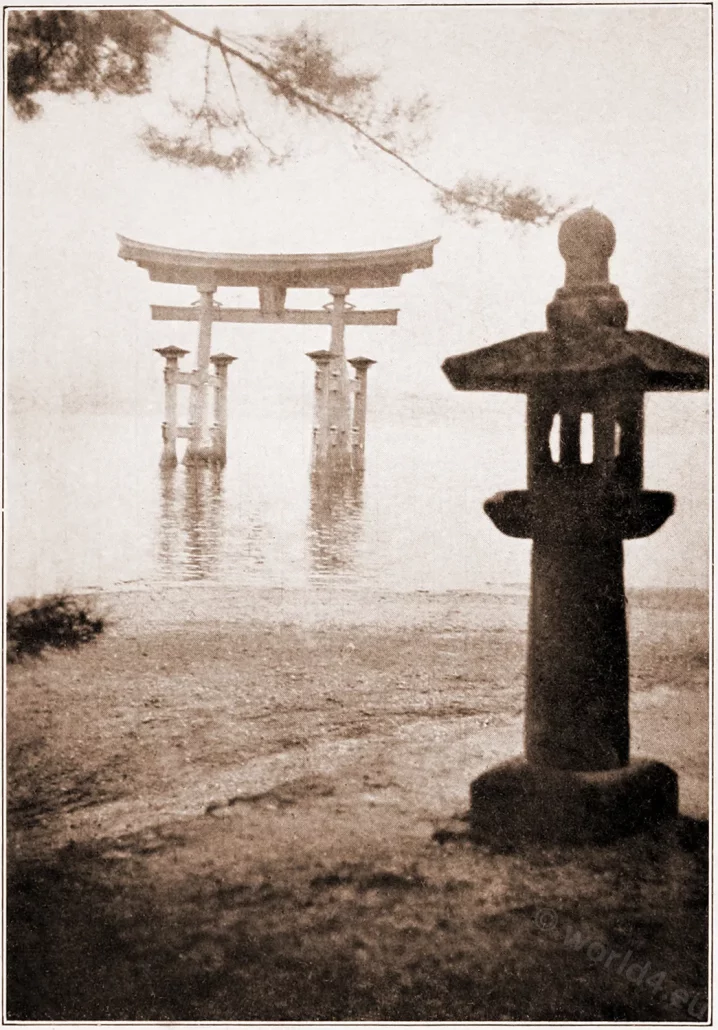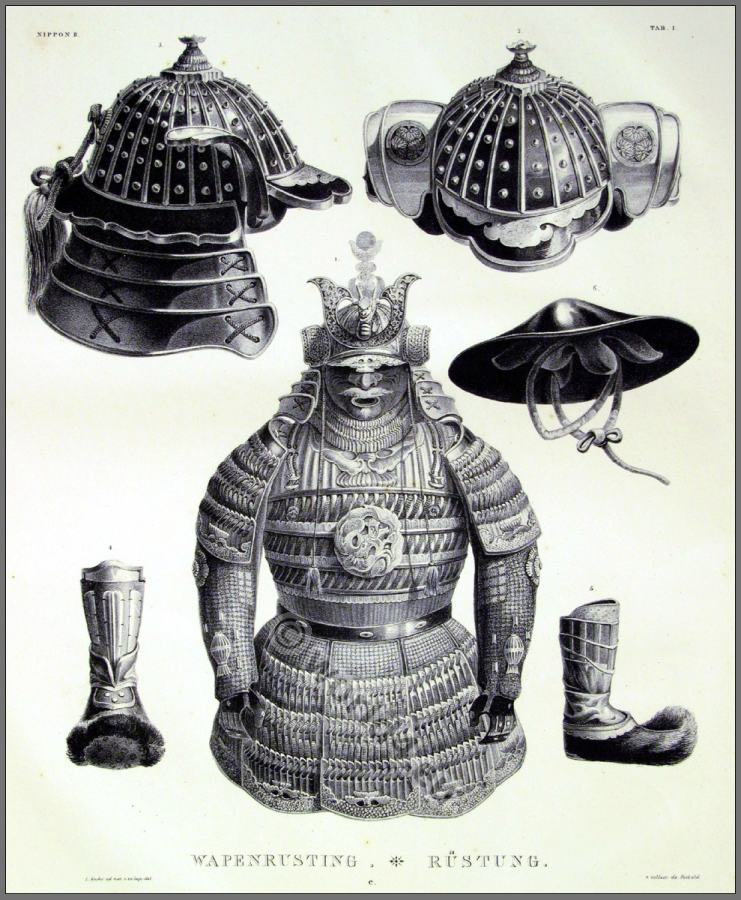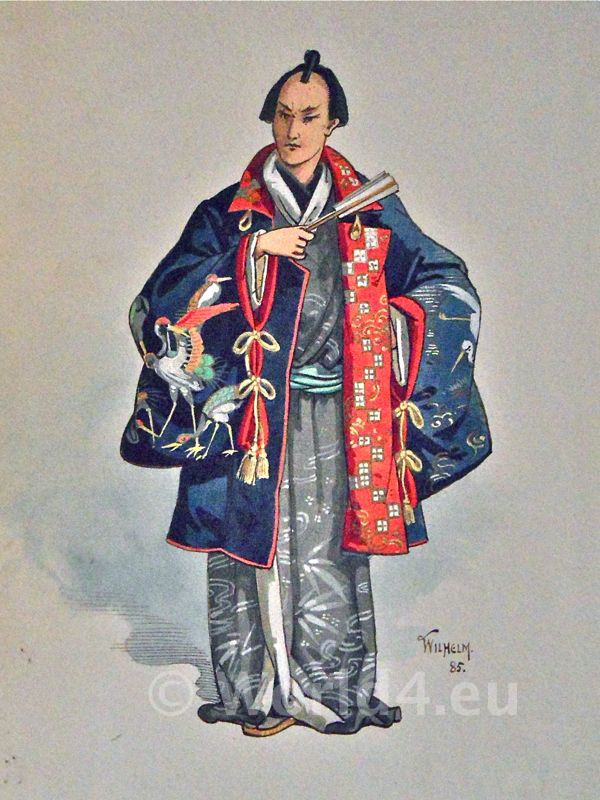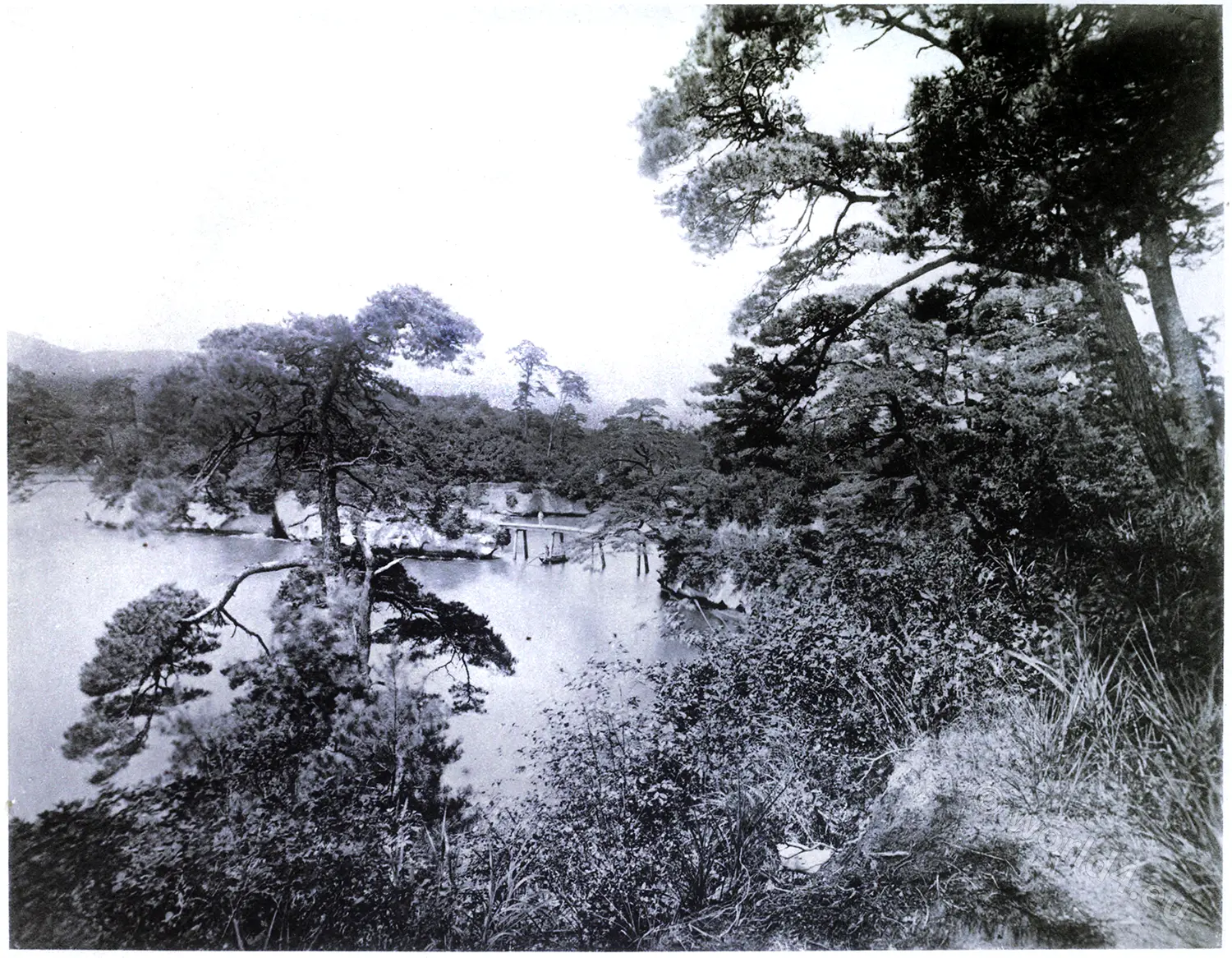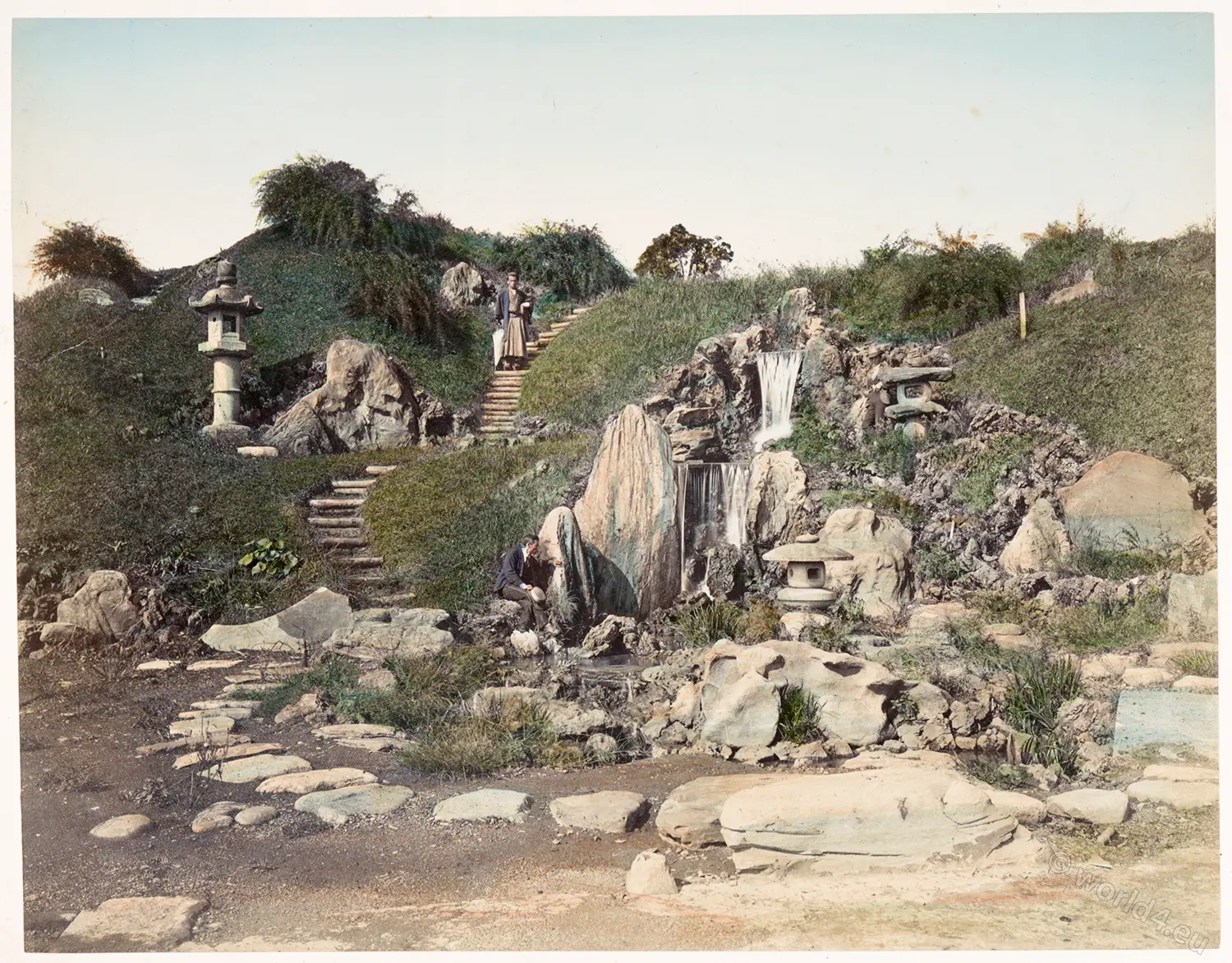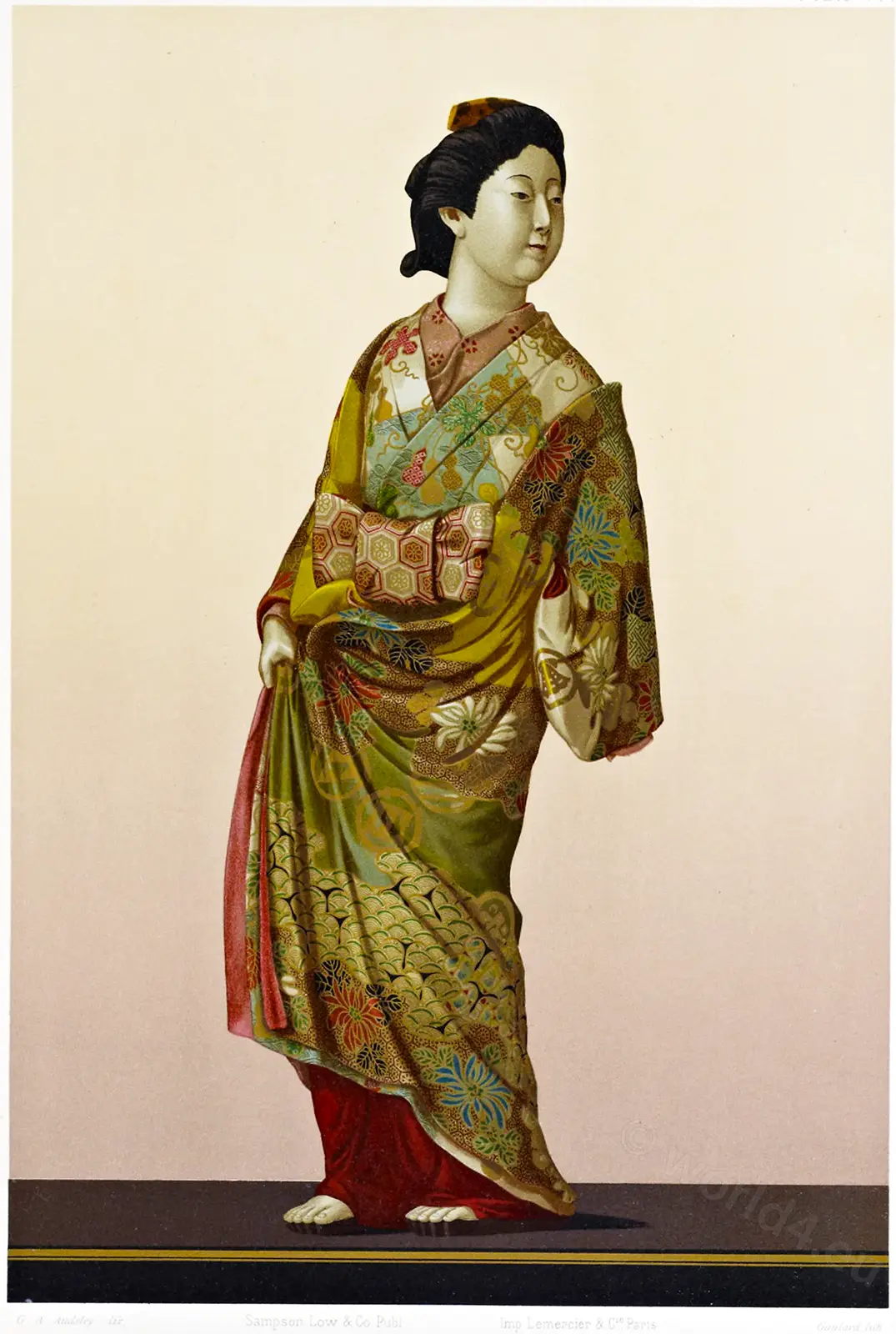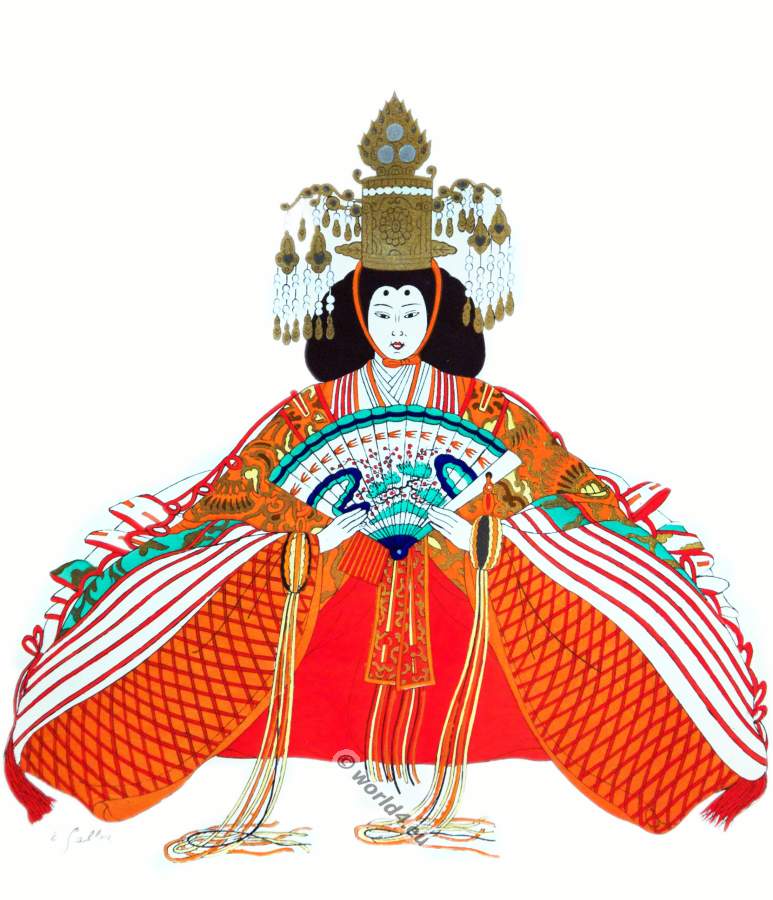THE FAMOUS OLD TORII ( 鳥居, GODDESS SYMBOL), MIYAJIMA, JAPAN
Miyajima (“Island of Light”,) or Itsukushima Shrine (厳島神社, Itsukushima Jinja) is one of the San-Kei or “Three most beautiful scenes of Japan”. The island is sacred to Benten, the Goddess of the Sea, of Beauty, of Wealth -one of the seven Divinities of Luck.
The whispering voices of tradition—how we treasure them—tell us that the Torii, the stately, well poised gateway of Shinto faith, has an office that lifts it far above the commonplace.
The Sun at divers times and places, comes down to earth in the form of the great and wondrous Ho-Wo Bird, or Heavenly Phoenix, using for its perch one of the many Torii Gates, which the good people of Japan have built and placed throughout the land for that most exalted purpose.
The traveller may still see the Torii at the entrance to the Shinto temple grounds, where it appears as the signification of the true gateway to a life of grace ; in art, it is used innumerable times in the decoration of Japan’s fairest ornaments.
Source:
- Myths of China and Japan by Donald A. Mackenzie (1873-1936). London, The Gresham publishing company ltd, 1923.
- Mythological Japan: the symbolisms of mythology in relation to Japanese art, by Alexander Francis Otto. Philadelphia: Drexel Biddle, 1902.
- JAPAN. Described and Illustrated by the Japanese. Written by Eminent Japanese Authorities and Scholars. Edited by Captain F Brinkley (1841 – 1912) of Tokyo Japan. With an Essay on Japanese Art by Kakuzo Okakura (1860 – 1929) Director of the Imperial Art School at Tokyo Japan. 1897.
Discover more from World4 Costume Culture History
Subscribe to get the latest posts sent to your email.

